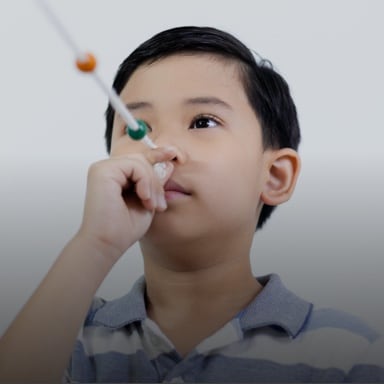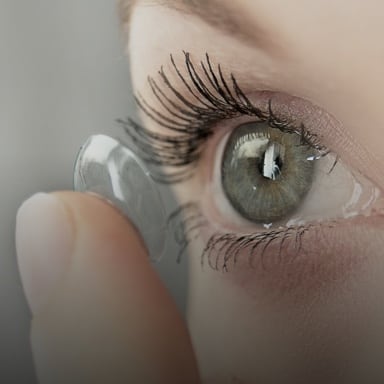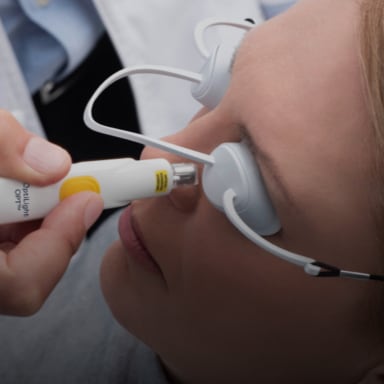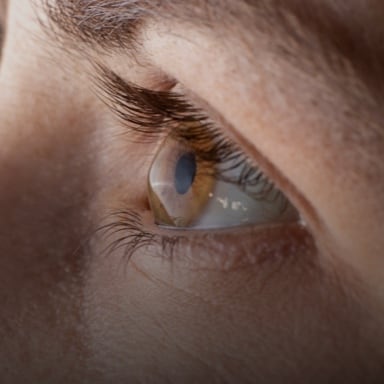Keratoconus Treatment
Typically, there are a few options available to help people who have keratoconus see more clearly, depending on severity: lenses, cross linking therapy, and surgery.
Vision correction—mild to moderate keratoconus can be corrected using eyeglasses or contact lenses. Some specialty contact lenses, such as RGP, hybrid, or scleral lenses, can make vision correction more comfortable for those with keratoconus.
Corneal collagen cross-linking—In this process, the corneal tissues are strengthened using riboflavin-medicated eye drops and ultraviolet light. This causes your cornea to stiffen, preventing further thinning and bulging. It doesn’t correct vision, but it can prevent progression.
Corneal transplant surgery—Scarring, extreme corneal thinning, and poor vision may lead you to need corneal transplant surgery. There are 2 types of transplant surgery: keratoplasty and deep anterior lamellar keratoplasty (DALK).
Keratoconus & Your Eyes
Keratoconus affects the shape of your cornea (the clear outer layer of your eye). When light enters your eye, it goes through your cornea first. An incorrectly-shaped cornea can cause glare like you might experience in a car during an early morning drive. Keratoconus typically develops in the late teens or early 20s, resulting the cornea bulging outward in the shape of a cone.
If you’re having difficulty managing bright lights or blurry vision when it’s sunny outside, you might be struggling with keratoconus. A comprehensive eye exam lets us learn what’s causing your vision problems and develop a plan to help you.If your vision is blurry, even with glasses or contact lenses, and you think you may have an irregularly shaped cornea, please come in for a comprehensive eye exam. Our optometrists are highly skilled in helping patients with keratoconus.


How Keratoconus Affects You
Advanced keratoconus can cause blurry vision, distortion, haloes, glare, and sensitivity to light, even with glasses on. It may also be uncomfortable to wear contact lenses.

How Keratoconus is Diagnosed
Symptoms of keratoconus typically appear in the late teenage years or early 20s and can progress for 10–20 years before slowing down and stabilizing. Keratoconus can also affect each eye at different rates.
The doctors at Specialty Eye can diagnose the early stages of keratoconus at your comprehensive eye exams.
Your risk of developing keratoconus could be increased if you:
- Have a family history of keratoconus
- Frequently & vigorously rub your eyes
- Have certain conditions like hay fever, asthma, Down syndrome, and others
Refraction
Determining your prescription is an integral part of diagnosing keratoconus. Testing the refraction determines how light enters your eye. If you have keratoconus, light rays will not be able to come to a pinpoint focus on the retina. Your optometrist will use a phoropter (different lenses) and a retinoscope (a handheld device) to determine your refraction.
Slit-Lamp
During your exam, your optometrist may use a slit lamp, which is a microscope with a bright light that is shined into your eye to illuminate the structures at the front of the eye. During the slit lamp exam, your optometrist evaluates the shape of your cornea and looks for other potential issues.
Corneal Mapping
Corneal tomography and topography both take detailed images of the shape, dimensions, and thickness of your cornea—the frontmost part of your eye. Corneal mapping can often detect the earliest signs of keratoconus before other tests.
Keratometry
A quick and effective test for keratoconus is keratometry—your eye doctors will focus a circle of light on your eye and measure your corneal curvature. Having a very steep cornea is a sign of keratoconus.
Trusted Experts
Specialty Eye puts your eye health at the top of our priority list. We are always working to learn about the latest technologies and techniques available to best serve you. Our optometrists have extensive experience in treating and managing keratoconus symptoms. If needed, we will refer you to an ophthalmologist for advanced treatment. Book your appointment today to speak with our experts.
Our Locations
Bellevue
Steps away from beautiful Bellevue Square Mall, our office is conveniently located just off the I-405 on 106 Avenue NE.
- 225 106 Ave. NE
- Bellevue, WA 98004
Hours of Operation
- Monday: 10:00 AM – 6:00 PM
- Tuesday: 9:00 AM – 5:00 PM
- Wednesday: 9:00 AM – 5:00 PM
- Thursday: Closed
- Friday: 9:00 AM – 5:00 PM
- Saturday: Closed
- Sunday: Closed
Kirkland
Next to the Evergreen Hospital, our convenient location is on NE 128 Street, just off the I-405.
- 11830 NE 128 St., Suite 1
- Kirkland, WA 98034
Hours of Operation
- Monday: 9:00 AM – 5:00 PM
- Tuesday: 9:00 AM – 5:00 PM
- Wednesday: 9:00 AM – 5:00 PM
- Thursday: 9:00 AM – 5:00 PM
- Friday: 9:30 AM – 5:00 PM
- Saturday: Closed
- Sunday: Closed
Our Specialty Eye Care

See What People Say About Us
“All the associates here are wonderful! Everyone is thoughtful and accommodating. I have to use a walker and ever single person was patient and helpful in maneuvering me to be comfortable with doing certain test. In addition, my doctor is amazing!”
Andrea Norton
“The office is very informative. The Dr’s and staff are great and we look forward to starting our vision therapy!!”
Cori Brundage Frandsen
“My son has been going here since he was 1. We’ve never had a bad experience, and we’ve had a lot of visits because of his vision problems.”
Deanna Dooley Stanley
Our Expert Blog
Think You Have Dry Eye Syndrome? Take Our Quiz!
Dry EyeDo you often find yourself rubbing your eyes frequently? Are you experiencing a burning sensation, eye fatigue, or redness? These are a few signs that you might be struggling with a common condition known as dry eye. Dry eye symptoms are widespread and can be caused by several factors, including other eye conditions, like digital […]
How Do Atropine Eye Drops Help Control Myopia in Kids?
MyopiaMyopia, also known as nearsightedness, is a common vision condition that affects many people. It usually starts in childhood and is caused by the elongation of the eyeball, leading to difficulty seeing objects at a distance. Nowadays, there are several ways to manage myopia, and atropine eye drops are a popular method for slowing myopia […]
Can Nearsightedness Be Reversed?
MyopiaFirst, let’s clarify what nearsightedness is exactly. The technical term for the condition that causes nearsightedness is myopia, which affects approximately 30% of Americans. People with myopia can see objects up close clearly, but things farther away appear blurry. When your eye grows too long or your cornea is too curved, light that enters your […]
Think You Have Dry Eye Syndrome? Take Our Quiz!

Do you often find yourself rubbing your eyes frequently? Are you experiencing a burning sensation, eye fatigue, or redness? These are a few signs that you might be struggling with a common condition known as dry eye. Dry eye symptoms are widespread and can be caused by several factors, including other eye conditions, like digital […]
How Do Atropine Eye Drops Help Control Myopia in Kids?
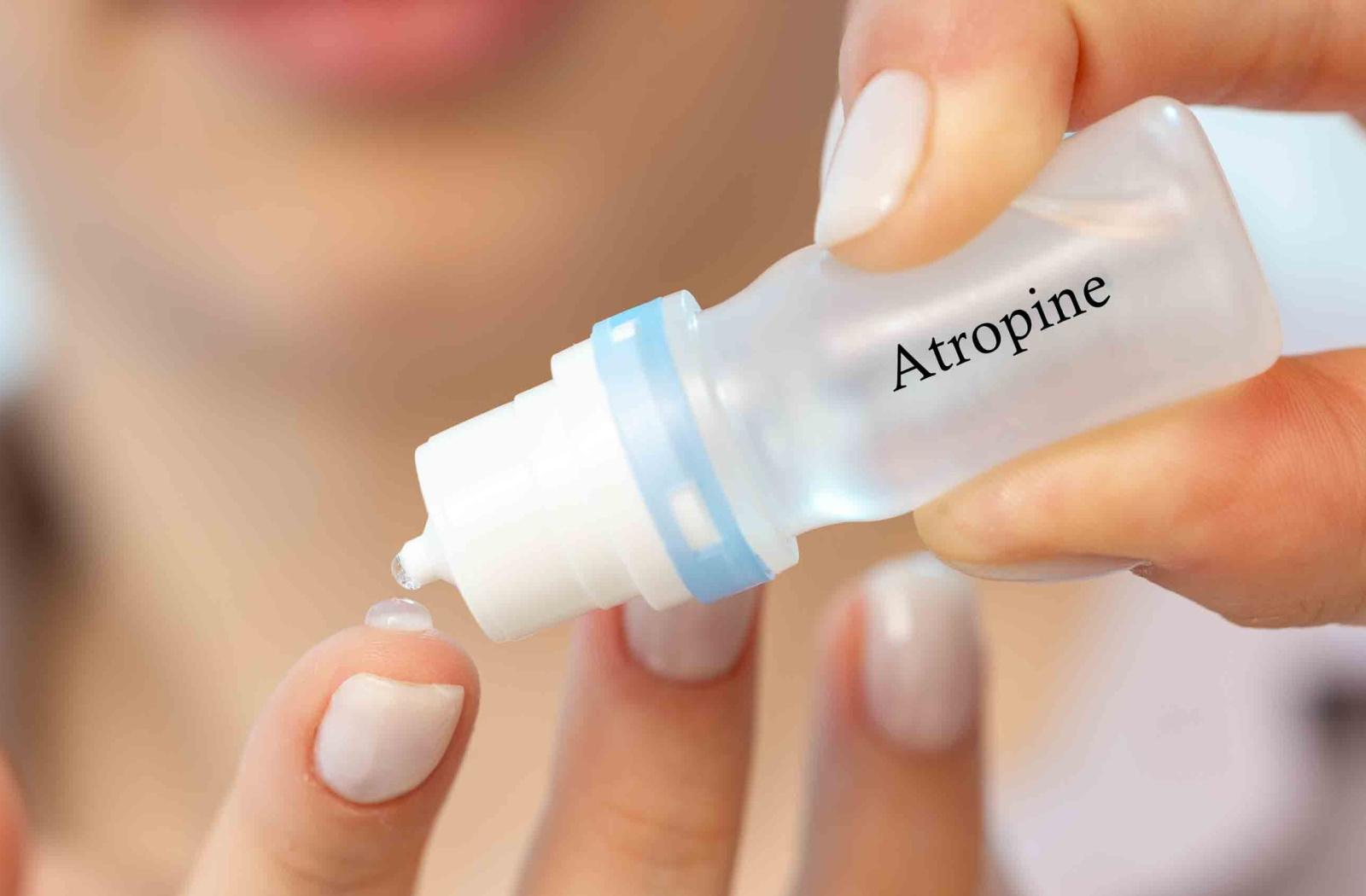
Myopia, also known as nearsightedness, is a common vision condition that affects many people. It usually starts in childhood and is caused by the elongation of the eyeball, leading to difficulty seeing objects at a distance. Nowadays, there are several ways to manage myopia, and atropine eye drops are a popular method for slowing myopia […]
Can Nearsightedness Be Reversed?

First, let’s clarify what nearsightedness is exactly. The technical term for the condition that causes nearsightedness is myopia, which affects approximately 30% of Americans. People with myopia can see objects up close clearly, but things farther away appear blurry. When your eye grows too long or your cornea is too curved, light that enters your […]


